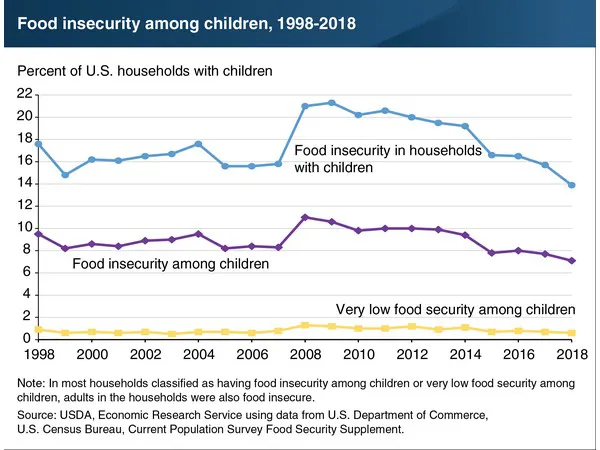Food-insecure households have difficulty providing enough food for all members due to a lack of money or other resources for obtaining food. USDA measures food insecurity in households with children in several different ways.
In 2018, 13.9 percent of U.S. households with children were food insecure: in these households, someone was food insecure, but not necessarily the children. In a little over half of these households—7.1 percent of U.S. households with children—both children and adults were food insecure.
Both of these indicators, food insecurity in households with children and food insecurity among children, were at their lowest levels since 1998. The prevalence of very low food security among children was 0.6 percent in 2018. In these households experiencing the more severe range of food insecurity, caregivers reported that children were hungry, skipped a meal, or did not eat for a whole day because there was not enough money for food.

This chart appears in “Food Insecurity Among Children Has Declined Overall But Remains High for Some Groups” in the December 2019 issue of the USDA, Economic Research Service Amber Waves magazine.
